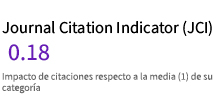Distillation of aesthetics and history. The creative veins of Spanish cinema in Blancanieves of Pablo Berger
DOI:
https://doi.org/10.24310/Fotocinema.2023.vi26.15354Keywords:
Spanish cinema, Pablo Berger, Blancanieves, popular culture, myth, grotesqueAbstract
The aim of this paper is to demonstrate that the film Blancanieves (Pablo Berger, 2012) embodies the main facets of cinematographic Spanishness. For that purpose, the article traces and points out throughout the film the presence of the four creative or artistic veins inherited from popular culture, in which, according to Santos Zunzunegui, Spanish cinema has expressed itself from its beginnings to the present day: traditionalist popularism, grotesque deformation, myth and avant-garde extraterritoriality. The film is the result of a miscegenation process that combines these expression forms, typical of Spanish cinema, with references to other international titles and aesthetic trends in a complex exercise of intertextuality. But Berger goes even further and assumes the role of film historian since the narrative and formal development of Blancanieves proposes a diachronic journey through the historical evolution of Spanish cinema, which is revealed both in the story and in the mise-en-scène of the protagonist's itinerary.
Downloads
Metrics
Publication Facts
Reviewer profiles N/A
Author statements
Indexed in
-
—
- Academic society
- N/A
- Publisher
- Universidad de Málaga
References
Arocena, C. (1994). En redondo. Una aproximación espacial al espectáculo taurino. Eutopías.
Barthes, R. (1980). Mitologías. Siglo XXI.
Benet, V.J. (2012). El cine español. Una historia cultural. Paidós.
Bettelheim, B. (2003). Psicoanálisis de los cuentos de hadas. Crítica.
Bracco, D. (2015). El hechizo de las imágenes. Blancanieves, el cuento espectacular de Pablo Berger (2012). Fotocinema. Revista científica de cine y fotografía, (11), 26- 49. https://doi.org/10.24310/Fotocinema.2015.v0i11.6074
Cardona, R., y Zahareas, A.N. (1987). Visión del esperpento. Castalia.
Castro de Paz, J.L. (2012). Sombras desoladas. Costumbrismo, humor, melancolía y reflexividad en el cine español de los años cuarenta. Shangrila Textos Aparte.
Castro de Paz, J.L., y Gómez Beceiro, F. (2015). Amor, pérdida, melancolía, delirio: un modelo de estilización obsesivo-delirante en el cine español de los cuarenta. L’Atalante. Revista de estudios cinematográficos, (20), 7-14. http://www.revistaatalante.com/index.php?journal=atalante&page=article&op=view&path%5B%5D=257
Correa Calderón, E. (1964). Costumbristas españoles. Aguilar.
Cox, A. (2017). Interrogating the “Real”: The Circular Construction of Race and Remediation in Pablo Berger's Blancanieves/Snow White (2012). Bulletin of Hispanic studies, 94(3), 315-335. doi: 10.3828/bhs.2017.20
Deveny, T. (2016). Blancanieves. A Film Adaptation of Snow White with a Spanish Twist. Marvels & Tales: Journal of Fairy-Tale Studies, 30(2), 328-354. https://doi.org/10.13110/marvelstales.30.2.0328
Feiner, M. (2004). ¡Torero! Los toros en el cine. Alianza Editorial.
Gómez Llorente, A.M. (2013). Fotogramas de luz y muerte. Referentes visuales y narrativos en la Blancanieves de Berger. En E. Camarero Calandria y M. Marcos Ramos (Coords.), Actas del II Congreso Internacional de Historia, Literatura y Arte en el Cine Español y en Portugués. De los orígenes a la revolución tecnológica del siglo XXI (pp. 445-456). Universidad de Salamanca. https://cebusal.es/publicacion_ceb/ii-congreso-internacional-de-historia-literatura-y-arte-en-el-cine-en-espanol-y-portugues-de-los-origenes-a-la-revolucion-tecnologica-del-siglo-xxi-actas-completas/
Navarrete Cardero, J.L. (2009). Historia de un género cinematográfico: la españolada. Quiasmo.
Romero de Solís, P. (2010). Tauromaquia y ritual. En N. Sagredo (Coord.), Taurus. Del mito al ritual, (pp. 37-55), Museo de Bellas Artes de Bilbao.
Zubiaur Gorozika, N.E. (2016) Lágrima de vida y muerte, redonda como una luna. Revista Shangrila, (27), 42-53.
Zunzunegui, S. (2002). Historias de España: de qué hablamos cuandos hablamos de cine español. Institut Valencià de Cinematografia Ricardo Muñoz Suay.
Zunzunegui Díez, S., y Zumalde Arregi, I. (2016). Surcos. El arte nacional popular en el cine de la II República. En J. Pérez Perucha y A. Rubio (Coords.), Faros y torres vigía. El cine español durante la Segunda República, pp. 35-56. AEHC/ Vía Láctea.
Downloads
Published
How to Cite
Issue
Section
License
All contents published in Fotocinema Revista científica de cine y fotografía are protected under the Creative Commons Attribution-NonCommercial-ShareAlike 4.0 International (CC BY-NC-SA 4.0) license. All about this license is available in the following link: <http://creativecommons.org/licenses/by-nc-sa/4.0>
Users can copy, use, redistribute, share and exhibit publicly as long as:
- The original source and authorship of the material are cited (Journal, Publisher and URL of the work).
- It is not used for comercial purposes.
- The existence of the license and its especifications are mentioned.
There are two sets of authors’ rights: moral and property rights. Moral rights are perpetual prerogatives, unrenounceable, not-transferable, unalienable, imprescriptible and inembargable. According to authors’ rights legislation, Fotocinema. Revista científica de cine y fotografía recognizes and respects authors moral rights, as well as the ownership of property rights, which will be transferred to University of Malaga in open access. The property rights are referred to the benefits that are gained by the use or the dissemination of works. Fotocinema. Revista científica de cine y fotografía is published in an open access form and it is exclusively licenced by any means for doing or authorising distribution, dissemination, reproduction, , adaptation, translation or arrangement of works.
Authors are responsable for obtaining the necessary permission to use copyrighted images.














13.png)



